When Ice Cream Theft Backfires: Roommate Gets a Fiery Minty Surprise
Living with roommates comes with its fair share of conflicts, but few are as deliciously spicy as this one—literally. After repeatedly discovering his chocolate ice cream completely devoured and the tub discarded in the trash, one fed-up roommate decided to serve a dish of cold, calculated revenge. Swapping his usual chocolate ice cream for mint chocolate and spiking it with pure extracts of menthol and capsaicin, the victim turned the table on his sticky-fingered roommate. The flavor combo delivered an intense icy-hot sensation that likely had the thief questioning his life choices.
The best part? The guilty party never confronted him, but the psychological aftermath lingered. The mint chocolate ice cream remained untouched from then on, and the mere sight of its consumption appeared to visibly unsettle the once-bold dessert burglar. It was a masterclass in subtle retaliation, psychological warfare, and an unexpected gateway into a newfound flavor preference.
People who steal from their roommates don’t feel guilty about it till they are taught a lesson

The poster, at the time of this story, kept chocolate ice cream in his fridge but his roommate was always quick to steal it and throw the empty tub in the trash
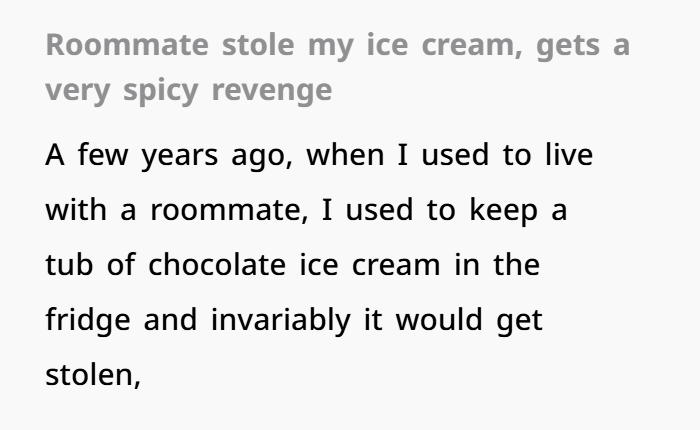
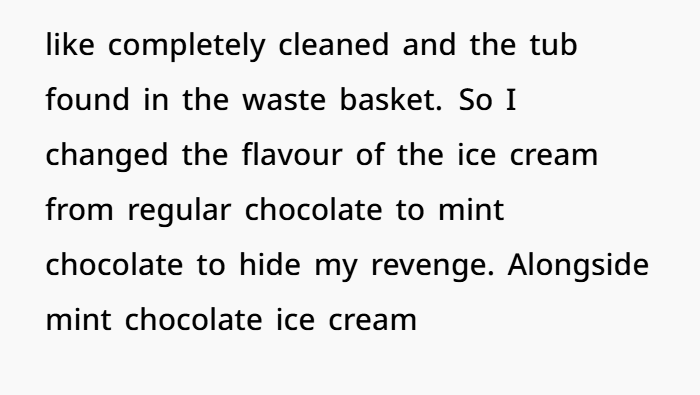
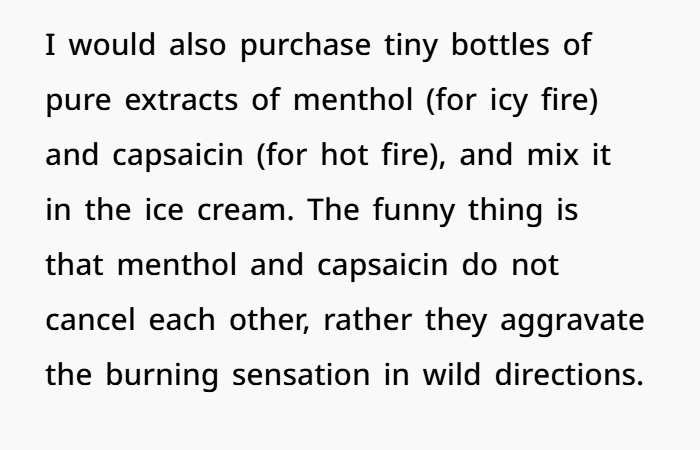
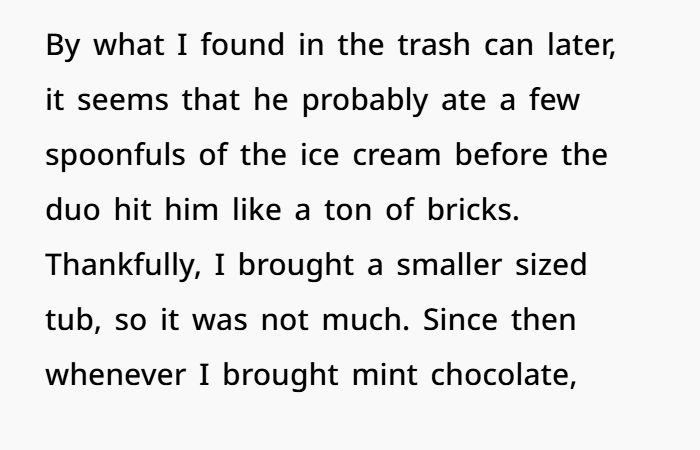
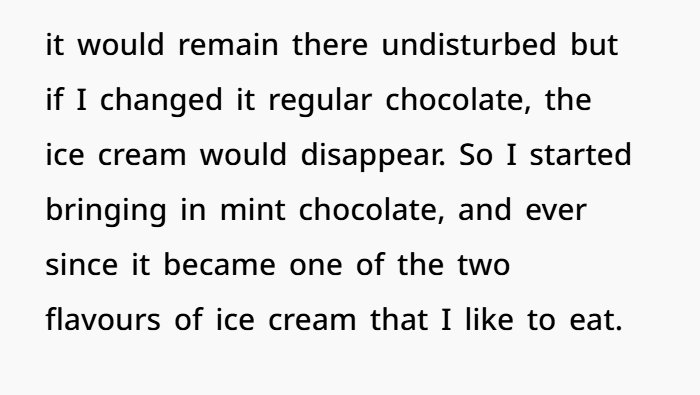
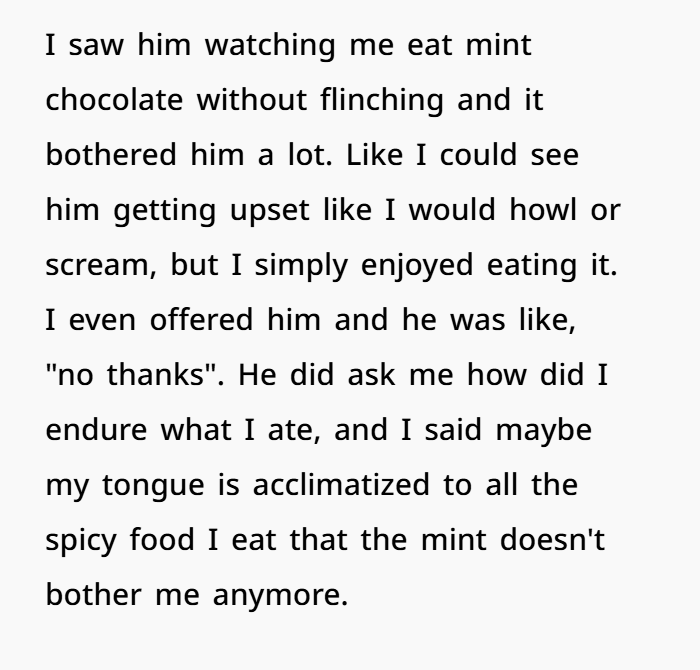
he Cold Burn of Justice—How Menthol, Capsaicin, and a Roommate’s Greed Created the Perfect Revenge
Living with a roommate is often a mix of compromise, communication, and—sometimes—unspoken tension. The communal fridge becomes a battleground of passive aggression, hastily scribbled “DO NOT EAT” notes, and secret surveillance. In this case, the battlefield was a tub of chocolate ice cream. But instead of escalating the conflict through confrontation or complaints, the storyteller delivered a chilling—and searing—lesson in boundaries using a bit of culinary chemistry.

This wasn’t just a prank. It was a masterclass in deterrence theory, flavored with a unique blend of schadenfreude and mint chocolate.
The Psychology of Petty Theft: Why Roommates Steal Food
Before diving into the spicy science, it’s worth unpacking why this sort of thing happens in the first place. Food theft among roommates is incredibly common. A 2015 study by SpareFoot found that nearly 1 in 3 people who have had a roommate experienced food theft (source).
The motivations vary:
- Entitlement: Some roommates feel shared groceries are part of the shared space.
- Impulse: It’s easy, accessible, and delicious in the moment.
- Lack of consequences: Most victims simply complain or let it go.
That last point is key. When people know they can get away with bad behavior repeatedly, it reinforces the habit. The storyteller here chose not to escalate verbally. Instead, they rewrote the consequences.
Why the Ice Cream Trap Worked So Well
Enter the mint chocolate ice cream. Harmless, right? Wrong.
The genius was in selecting a flavor that looked plausible but hid a culinary time bomb. The two key ingredients—menthol and capsaicin—are chemical irritants that target different receptors in the human body:
- Menthol activates the TRPM8 receptor, tricking the brain into perceiving cold—even if the temperature isn’t actually low. It creates a sharp, almost painful iciness.
- Capsaicin, found in chili peppers, binds to the TRPV1 receptor, which normally responds to heat and physical abrasion, creating that familiar burning sensation.
Here’s the kicker: when combined, menthol and capsaicin don’t cancel each other out. They actually amplify the perceived sensory confusion, making the pain feel colder and hotter at once. It’s not just discomfort—it’s a neural glitch, a chaotic trick on the brain’s sensory mapping.

A 2016 study published in Nature Reviews Neuroscience explains this phenomenon of cross-sensory signaling. When two contrasting temperature-related chemical receptors are activated, the brain attempts to reconcile the data but ends up amplifying the sensation, often making it unbearable (source).
That’s what your roommate walked into: an icy inferno of deception.
The Long Game: Behavioral Conditioning Through Ice Cream
The aftermath is even more fascinating. Your roommate didn’t just suffer a bad bite. He was conditioned. Pavlov might’ve used bells and dogs, but you used mint chocolate and misery.
This is aversive conditioning in action—a psychological technique where an unpleasant stimulus is associated with an unwanted behavior (like stealing). It’s commonly used in addiction therapy but works just as well in roommate battles.
The fact that:
- He never touched mint chocolate ice cream again,
- Even seeing you eat it unnerved him,
- And he asked you how you could “endure” it…
…proves that his brain formed a direct connection between the flavor and the physical punishment he endured.
Even better, this form of non-violent retaliation has a lasting deterrent effect. He likely didn’t just stop stealing your food—he probably thought twice before taking anything from that fridge ever again.

Ethical Mischief or Malicious Compliance?
Let’s be real: was it a bit mischievous? Absolutely. Could it have gone wrong? Theoretically yes, if your roommate had an allergy or medical sensitivity. But given that it was a small batch, and your intent was to stop the theft rather than cause harm, it skirts the line into the realm of malicious compliance more than outright danger.
In fact, the ethics of “spicy justice” have been debated in legal and philosophical circles. The crux often comes down to intent and reasonable expectation. Since your ice cream wasn’t labeled as “communal,” and you had a clear pattern of it being stolen against your consent, the prank functions as both self-defense and behavioral correction.
Folks online were delighted to hear this petty revenge while others also suggested other ideas




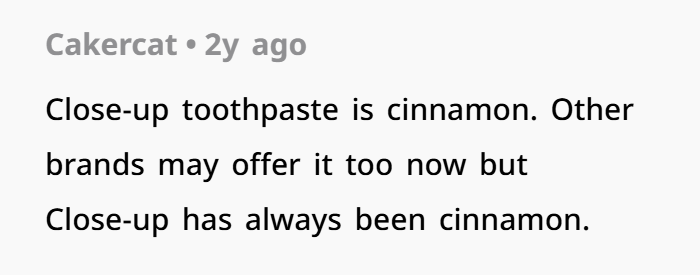
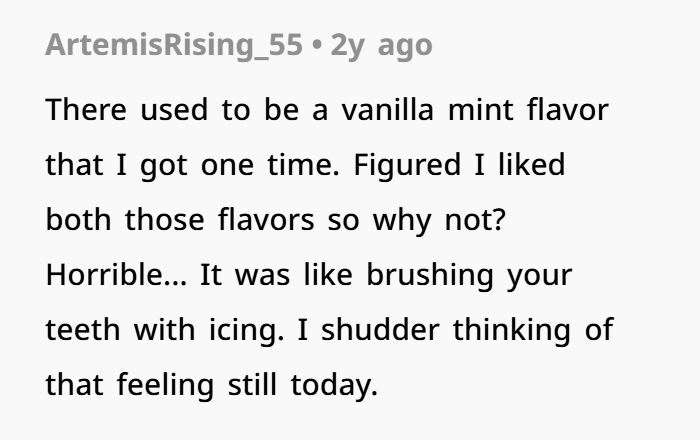

A Final Word
There’s a delightful irony in how the story ends. The very flavor meant to mask revenge became a new favorite. You adapted your tastes, turned a nuisance into a ritual, and even managed to instill fear—not through yelling or retaliation, but through the power of molecular gastronomy and behavioral psychology.
It’s a perfect example of what makes petty revenge stories so satisfying: justice served cold… with a hint of fire.


